The botanical name of lychee is Litchi Chinensis and besides lychee people also call it litchi. Attractive trees of lychee with glossy leaves can grow up to 40 feet tall and produce delicious fruit.
It is a tropical evergreen tree that likes to grow in a warm and wet climate. The lychees are juicy and edible fruits and have a handsome appearance. The size of fleshy lychee fruit is very small with a perfume-like flavor.
The color of the skin of the fruit is pink-red and the color of flesh inside the skin is white and sweet. The brown seed which is present in the fruit is poisonous.
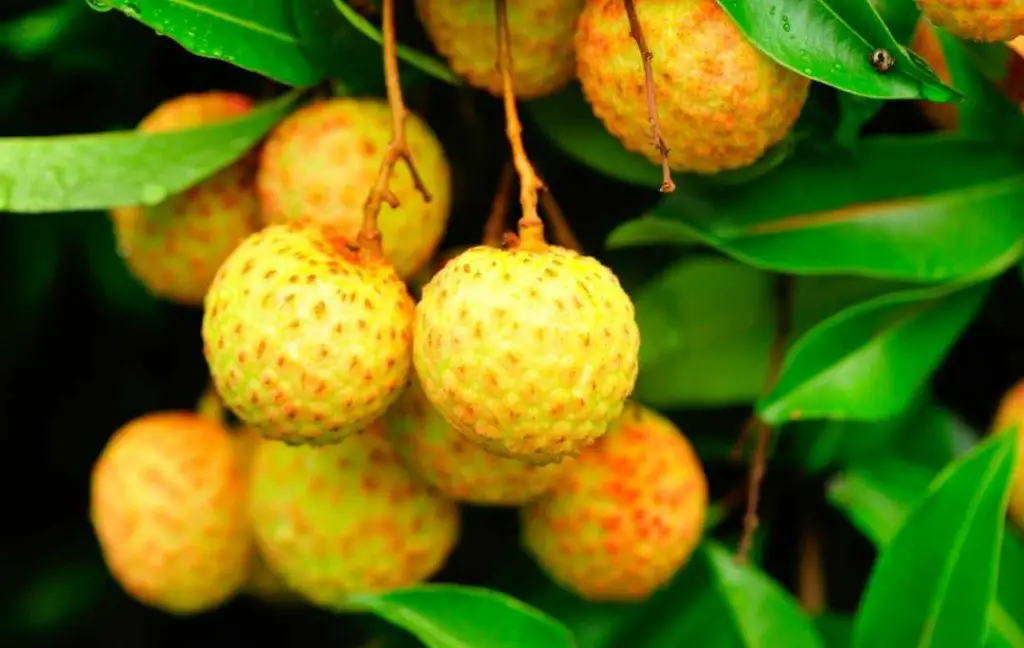
It is best to eat the fruit fresh but you can also make sauces, puree, and jam from it. It is suggested that you should not grow lychee from cuttings inside your home because it is not a natural choice for indoor gardening.
As a home grower, you can start growing lychee trees from seed. Lychee can tolerate slightly cold, try to protect lychee from frost.
It is not an easy task to propagate lychee from seeds, but from cuttings, your work becomes easier. The reason is that seeds lose viability due to dry weather and you will not get high-quality fruit.
If you try grafting then you will find this very difficult. The only easy way is left for growing lychee from cuttings.
BEST VARIETIES OF LYCHEE
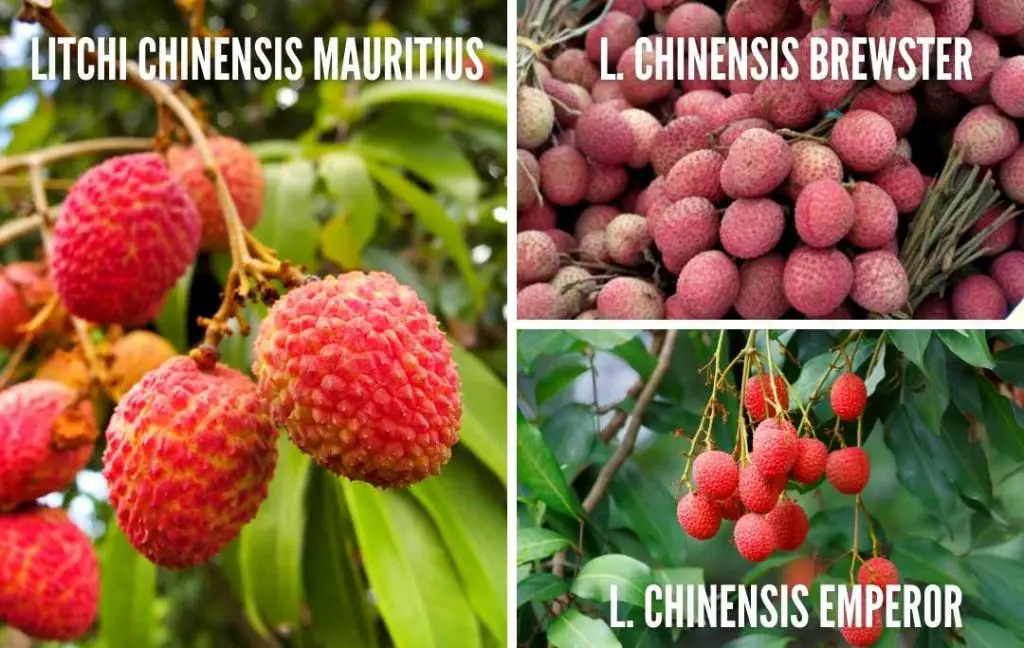
There are different cultivators found in lychee in different parts of the world but the most popular are as follows.
LITCHI CHINENSIS MAURITIUS
This variety has excellent fleshy fruit which has only a large seed. You should grow this type if you want good fruit production.
L. CHINENSIS BREWSTER
This type grows very fast with spreading habits. Remember you should grow this variety in areas where they get a lot of moisture. You will get good fruit production by growing this type of lychee.
L. CHINENSIS EMPEROR
You can grow this variety in the container. This is a slow-growing variety that requires less water.
WHEN TO GROW LYCHEE TREE?
The best time for planting lychee is when the weather is warm and humid. The site which you choose for planting lychee trees must be protected from harsh weather especially from winds because lychee trees can be susceptible to wind damage.
Heavy rain and strong winds during the flowering period cause the shedding of flowers. Frost is not good for lychee young trees but mature trees can tolerate light frosts.
HOW TO ROOT LYCHEE CUTTINGS?
The typically growing method of lychee is air-layering. The propagation of lychee from cuttings is the best way of growing a tree of lychee which gives you fresh fruit.
A sophisticated way where you can make a cut into a thin branch of lychee tree and then surround it with moss or soil. Soon you will see the roots which start emerging from the cut area of the branch.
Now cut the branch from the tree and plant it in a pot or the ground as a small lychee tree. Growing from cuttings is the quickest and popular method because you will get 80% success.
This method is called Marcotting, this is very helpful in the formation of roots. Here we are going to discuss all the steps of growing lychee from cuttings. Hope this article will help you a lot in completing your mission of growing a healthy tree from cuttings.
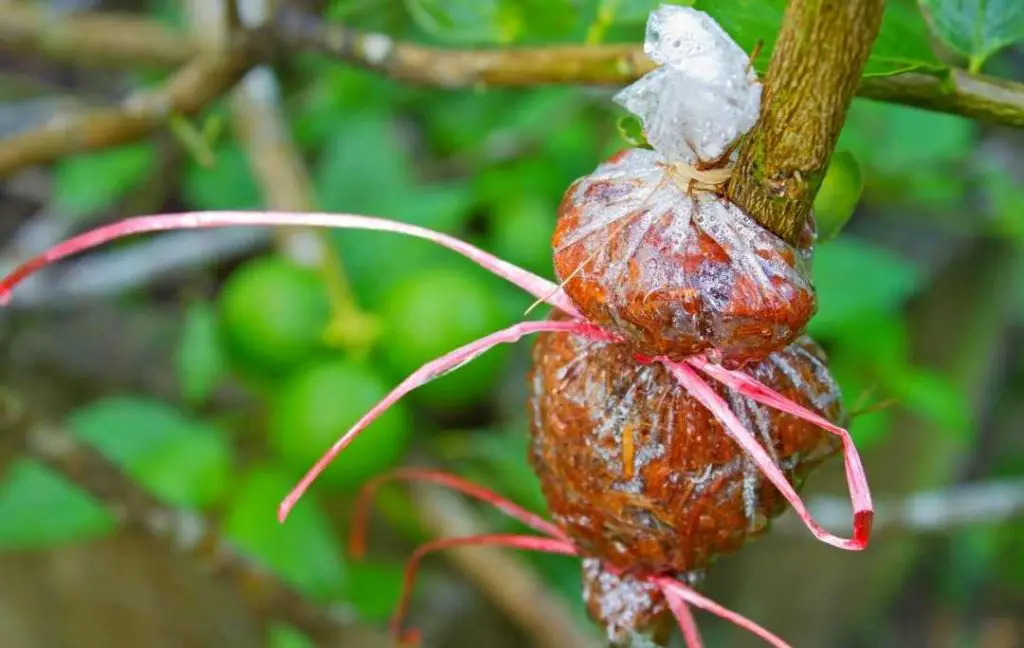
STEP 1
The first step is very simple, you need a few handfuls of sphagnum peat moss. Soak the peat moss in warm water for one hour.
TIP
Wear gloves when handling the peat moss because it may irritate your skin.
STEP 2
Now select the branch which is suitable for the air layering method. The diameter of the branch must be between ½ and ¾ inches. You can also use large branches but remember it will not seriously defoliate the parent plant.
You can use the branches which are located around the periphery of the tree. After selecting the branch, choose the spot which is just below a node. A node is a place where the leaf is attached to the branch.
STEP 3
Remove all the leaves and twigs at the bottom of the branch. This selected area should be 4 inches below and above the chosen site.
STEP 4
At this step, you need a sharp knife to make a 1 to 1-½ inches wide cut on the bark.
STEP 5
If you see the dust on the branch then make it clean. With the help of the brush, you can dust a small amount of rooting hormone on the cut part of the branch. Rooting hormone will speed up the root emerging process from the branch and your branch will quickly be ready for planting.
STEP 6
Now, this is the time to use peat moss which you soak in the water. Wrap a thick layer of peat moss around the wounded area of the branch. The layer should be 4 inches thick and 6 inches long and create an oblong mass around the branch. Wrap twine around the mass so it should keep in place.
STEP 7
After wrapping the twine, you should wrap polythene film or plastic sheeting around the layer of peat moss. This wrapping will help to keep the moisture in the moss which is very helpful in the growing process. For securing the film or plastic sheet to the branch you need electrical tape or florist ties.
STEP 8
Prepare the site where you want to grow your lychee tree. Before deciding the location for your plant you should keep in mind certain factors that will help you to grow a healthy lychee tree that produces fresh and juicy fruit.
- The area which you use for your lychee plant should receive full sun. But it is noted that young plants are not familiar with the full sun so they will suffer from sudden exposure to bright light. When they establish in the place they can grow better in sunlight. The fruit plants need more sunlight to give you more juicy and healthy fruit.
- The soil of the area where you are going to grow lychee plants should not be alkaline. You can add soil amendments to improve the quality of the soil which you are using. If you are growing a lychee plant in a raised bed then you can use slightly acidic potting soil. The pH of the soil must be between 6 and 7.
STEP 9
Cut the rooted branch from the parent tree below the root mass. For cutting purposes, you can use a sharp knife. But do this step when you can easily see the good from the plastic sheeting. The branch is ready for transplantation about six weeks after.
STEP 10
Slowly and very gently remove the polyethylene film or plastic sheeting from the peat moss. You should be careful doing this step because the roots are moss balls and should not damage during the removal process.
STEP 11
Now your wounded branch is ready for the transplantation process. Plant it on your desired location but keep the moss ball intact. You can stake the plant if it is necessary because it will help to keep your plant upright. Now your newly planted lychee branch needs water for adjusting to a new environment.
Related Articles
COMMON LYCHEE PROBLEMS AND HOW TO AVOID THEM
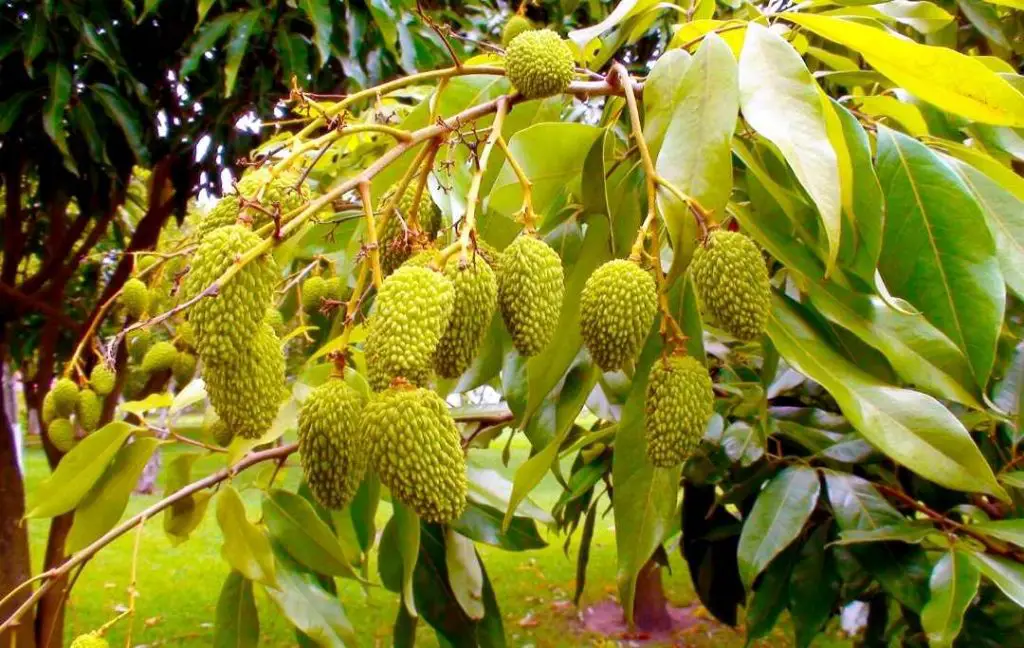
Lychee trees are very beautiful because they have rounded canopy and dark green foliage. They like to grow in well-drained soil with plenty of suns.
If you are living in a warm area then you can also grow lychee plants indoors. Here we are going to share some problems and their solutions with you. These tips will help you to keep your lychee trees healthy.
Watering: Lychee trees can tolerate dry conditions but young plants need regular water until they are well established. Water is a very important factor for making the strong foundation of young plants in the soil. If you provide regular water to your plants then it will prevent them from any common issues like fruit split.
It is suggested that you can withhold water from mature trees for six to eight weeks before blooming. But if you see the weather conditions are very dry and hot so you can water lightly during this period.
Pollination: If you plant two or three trees close then it will assist you in the pollination process and you will get good production of fruits. But you should leave at least 20 to 30 feet of space between each tree.
Barrier: You should maintain a barrier between lychee trees and lawn grass. The size of the barrier should be two or three feet. You should prevent the bark from hitting a lawnmower or weed trimmer because in this way the trunk can be damaged and as a result, the tree will be weakened.
Mulch: A layer of mulch helps to retain the moisture in the soil and prevents your plants from weeds. Spread a thin layer of 6 inches of mulch around the lychee tree.

PESTS
Above we discuss the common problems which will affect your lychee trees but the most important issue is pests that affect your lychee trees and you will not get a juicy treat from them.
MITES
In this category leaf curl, mite, and red spider mites are included. You can simply use neem oil and insecticidal soap spray to eradicate them.
CITRUS APHIDS
If aphids become a headache for you then you can get rid of them by using a spray of neem oil and insecticidal soap. You can also apply a heavy blast of water on the tree which will help to knock them off too.
CATERPILLARS
You can spray dormant oil in the late winter to smother the eggs. In this way, the eggs will be described before hatching.
HARVESTING
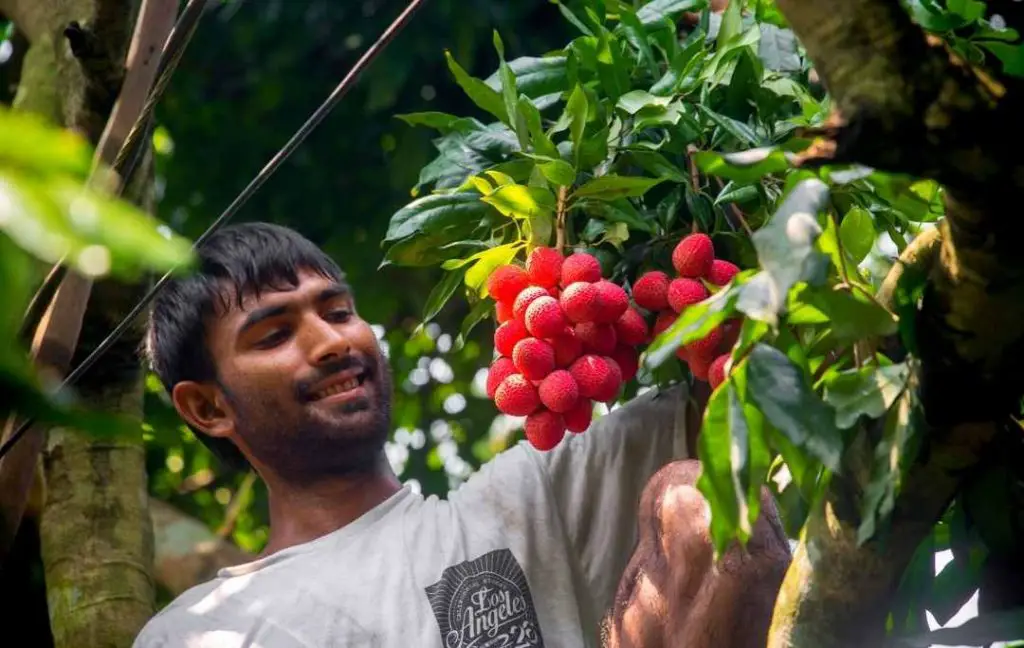
You have to show patience when you grow lychee trees because they will take at least five years to produce fruit. Your trees need exposure to cold temperatures for 100 hours in the winter season if you want trees to bloom and bear fruit.
For getting fruit, the female flowers must be pollinated. If you are growing lychee trees outdoors then this work will be done by the insects but if you are growing them indoors then hand pollination is suggested.
Lychee fruit grows in bunches on the tree. You should allow them to ripen and get a pink-red color before picking the fruit. You can check one fruit and test it. If you find the flavor is sweet enough then cut the entire bunch of fruit.
Related Articles
